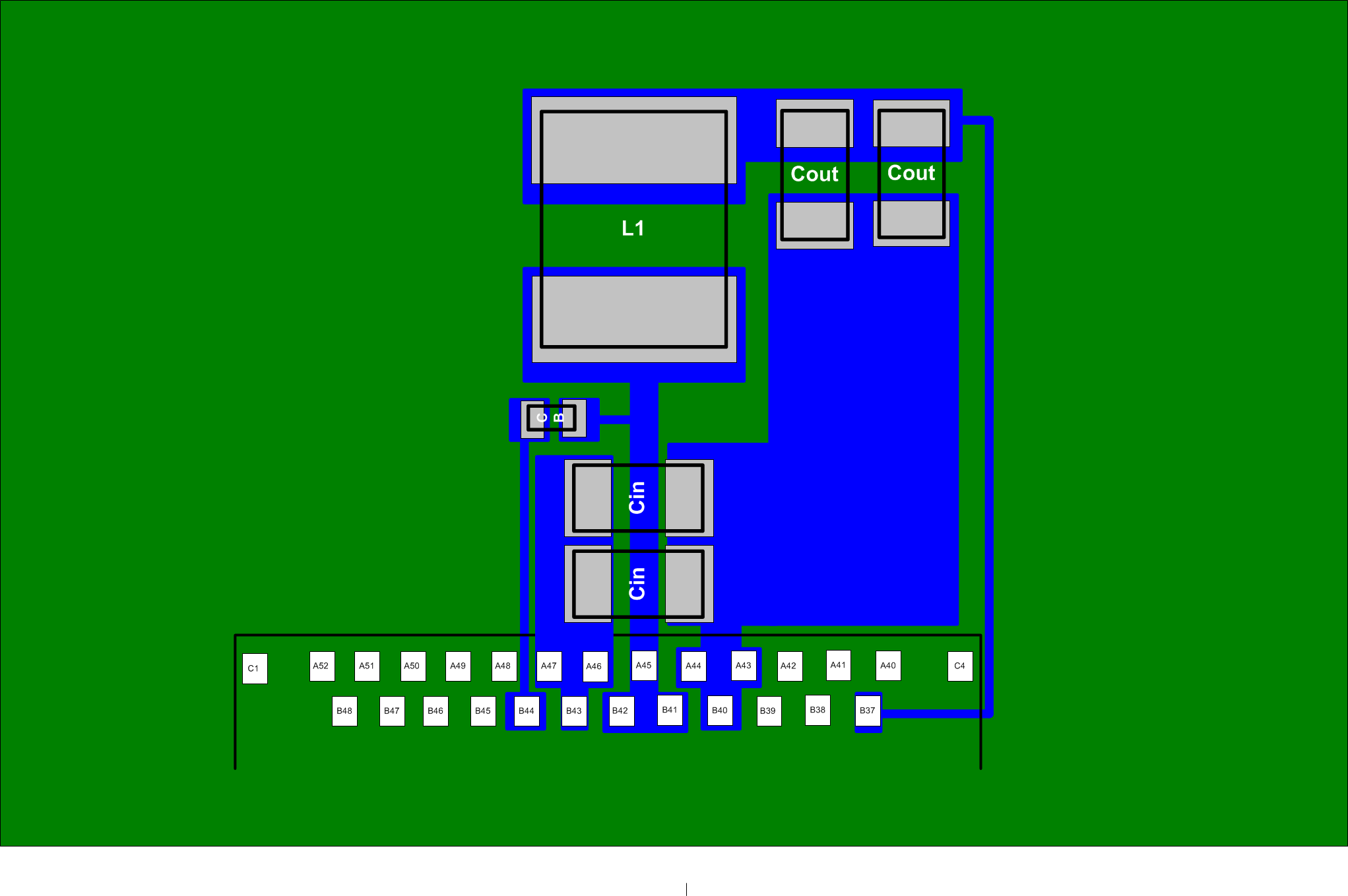SLVSBO6B January 2013 – July 2015 TPS65090
PRODUCTION DATA.
- 1 Features
- 2 Applications
- 3 Description
- 4 Revision History
- 5 Pin Configuration and Functions
-
6 Specifications
- 6.1 Absolute Maximum Ratings
- 6.2 ESD Ratings
- 6.3 Recommended Operating Conditions
- 6.4 Thermal Information
- 6.5 Electrical Characteristics - Power Path Control
- 6.6 Electrical Characteristics - Charger
- 6.7 Electrical Characteristics - DC-DC Converters
- 6.8 Electrical Characteristics - Linear Regulators
- 6.9 Electrical Characteristics - Load Switches
- 6.10 Electrical Characteristics - Control
- 6.11 Timing Requirements - I2C Interface
- 6.12 Typical Characteristics
- 7 Detailed Description
-
8 Application and Implementation
- 8.1 Application Information
- 8.2
Typical Applications
- 8.2.1
Front-End PMU Application
- 8.2.1.1 Design Requirements
- 8.2.1.2
Detailed Design Procedure
- 8.2.1.2.1 Programming the Converter or Charger Output Voltage
- 8.2.1.2.2 Programming Input DPM Current and Charge Current
- 8.2.1.2.3 Output Filter Design (Inductor and Output Capacitor)
- 8.2.1.2.4 Inductor Selection
- 8.2.1.2.5 Capacitor Selection
- 8.2.1.2.6 Charger Battery Temperature Sensing
- 8.2.1.2.7 Reverse Voltage Protection
- 8.2.1.2.8 AC Switches
- 8.2.1.2.9 Battery Switches
- 8.2.1.3 Application Curves
- 8.2.2 DC-DC Converters
- 8.2.3 Charger
- 8.2.1
Front-End PMU Application
- 9 Power Supply Recommendations
- 10Layout
- 11Device and Documentation Support
- 12Mechanical, Packaging, and Orderable Information
Package Options
Mechanical Data (Package|Pins)
- RVN|100
Thermal pad, mechanical data (Package|Pins)
- RVN|100
Orderable Information
10 Layout
10.1 Layout Guidelines
For all switching power supplies, the layout is an important step in the design, especially at high peak currents and high switching frequencies. If the layout is not carefully done, the regulator could show stability problems as well as EMI problems. Therefore, use wide and short traces for the main current path and for the power ground tracks. The input capacitor, output capacitor, and the inductor should be placed as close as possible to the IC. Use a common ground node for power ground and a different one for control ground to minimize the effects of ground noise. Connect these ground nodes at any place close to one of the ground pins of the IC.
The feedback divider should be placed as close as possible to the control ground pin of the IC. To lay out the control ground, TI recommends short traces, as well as separation from the power ground traces. This avoids ground shift problems, which can occur due to superimposition of power ground current and control ground current.
A complete layout example can be found in the TPS65090EVM User's Guide (SLVU778).
10.2 Layout Example
 Figure 71. DCDC1 Layout Example
Figure 71. DCDC1 Layout Example
10.3 Thermal Considerations
Implementation of integrated circuits in low-profile and fine-pitch surface-mount packages typically requires special attention to power dissipation. Many system-dependent issues such as thermal coupling, airflow, added heat sinks and convection surfaces, and the presence of other heat-generating components affect the power dissipation limits of a given component.
Three basic approaches for enhancing thermal performance are listed below.
- Improving the power dissipation capability of the PCB design.
- Improving the thermal coupling of the component to the PCB by soldering the PowerPAD.
- Introducing airflow in the system.
For more details on how to use the thermal parameters in the dissipation ratings table, see the Thermal Characteristics Application Note (SZZA017) and the IC Package Thermal Metrics Application Note (SPRA953).